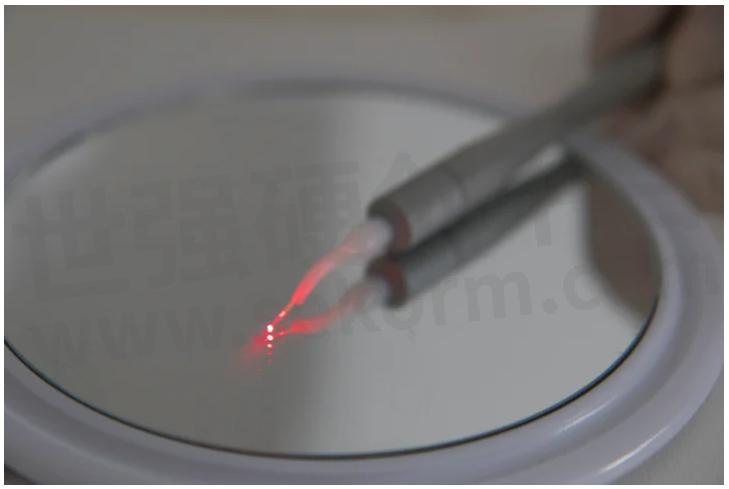Body Temperature Sensors with Precise Temperature Control for Medical Laser Devices

Despite how common they've become for patient treatment, the use of lasers as a surgical tool seems like something out of science fiction. Regardless, laser-assisted surgery is indeed here, and it represents a significant advancement in delivering extremely precise medical care.

However, laser-assisted surgery also brings new metrics that must be closely monitored, particularly temperature control. Put simply, without precise and immediately reactive temperature control via body temperature sensors, it’s impossible to guarantee the safety and effectiveness of laser-assisted surgery.
BODY TEMPERATURE SENSORS & SURGICAL LASER DEVICES: A NECESSARY PAIRING
Compared to traditional surgeries of just a few decades ago (which relied on incisions with scalpels and sutures to close the wound) the use of lasers allows for minimally invasive procedures with fewer risks of complications and shorter recovery times.
However, the concentrated beam of light that is the laser delivers an intense amount of heat – something the human body is not designed to withstand extended and unchecked exposure to.
In fact, surgical lasers can reach temperatures of up to 1,000℃. In the most basic sense, just like in critical care, precise temperature control is critical to avoid thermal damage to surrounding tissues during laser surgeries. The risks of thermal damage during laser surgeries cannot be overstated.
When temperatures exceed certain thresholds, cells can suffer irreversible damage, leading to scarring, nerve damage, and other serious injuries. In addition, temperatures that exceed safe ranges pose a threat to the medical professionals using laser surgical devices – just like the patient, the surgeon isn't impervious to extreme and prolonged exposure to heat.
Robust and reactive body temperature sensors allow surgeons and their teams a mechanism for more accurate patient temperature monitoring and control during laser-assisted surgeries.
TYPES OF TEMPERATURE SENSORS USED IN LASER SURGICAL DEVICES
While temperature monitoring in laser-assisted surgeries is critical for patient safety, there are a variety of temperature sensors that can be used depending on their device-specific application as well as the level of monitoring precision required.
In a general sense, body temperature devices used in laser-assisted surgeries fall into two categories: contact and non-contact, each representing a variety of temperature sensor types.
Thermistor – a type of resistor that exhibits a large and predictable change in resistance in response to changes in temperature. They are often used in temperature measurement and control circuits because they are highly sensitive to small changes in temperature, but can be susceptible to self-heating effects.
Thermocouples – temperature sensors that are made up of two wires of different metals that are welded together at the sensing end. When this junction is exposed to a temperature differential, it produces a voltage that is proportional to the temperature difference. Thermocouples are often used in high-temperature applications because of their durability and accuracy.
Resistance Temperature Detectors (RTDs)– made of a metal wire, usually platinum, that changes resistance as its temperature changes. They are very accurate and stable over time, but are generally slower to respond to changes in temperature compared to thermocouples and thermistors.
NON-CONTACT TEMPERATURE SENSORS
Infrared Temperature Sensors – Using infrared light to measure the temperature of an object or surface without making direct contact, this sensor works by detecting the thermal radiation emitted by the object and converting it into an electrical signal.
Fiber Optic Temperature Sensors – With optical fibers these sensors monitor changes in the physical properties of their fiber optic cable as temperature changes. The fiber optic cable is typically coated with a material that changes its refractive index as temperature changes, which alters the way light is transmitted through the fiber. This change in light transmission can be measured to determine temperature. Fiber optic medical temperature sensors are often used in harsh environments because they are immune to electromagnetic interference.
TEMPERATURE MAPPING IN LASER SURGERIES
While the data provided by a body temperature sensor during a laser-assisted surgery is invaluable, it's only half the picture of heat’s presence.
As its name indicates, temperature mapping is the process of creating a real-time presentation of the temperature in various areas of a patient’s body during laser surgery. While its focus is the immediate area where the laser is being used, it also looks at those nearby that might be affected by the beam's heat or the beam itself.
To perform temperature mapping during surgery, two main techniques are used: imaging and catheter-based temperature mapping.
Imaging techniques use specialized cameras to capture the changes in temperature during surgery. These cameras are designed to detect thermal emissions from the body and display the temperature in false colors on a computer screen, allowing physicians to visualize the temperature distribution and adjust the laser settings accordingly. In a very literal sense, imaging techniques is heat vision.
Catheter-based temperature mapping involves inserting a thin catheter into the body during surgery to take temperature readings at different locations. These catheters are equipped with custom miniature sensors that detect changes in temperature and transmit this information to a computer in the operating room. This technique provides more accurate temperature measurements in specific areas of the body but can be invasive and may require additional time.
APPLICATIONS OF TEMPERATURE SENSORS IN LASER SURGERIES
Despite being a newer method for patient treatment, laser-assisted surgery is finding its place as an effective way to deliver precise and highly accurate medical care. Its applications in healthcare have taken a few forms:
LASER ABLATION
During this procedure, a high-intensity laser beam is directed at the targeted tissue, causing it to heat up and vaporize. This process allows surgeons to remove tissue with a high degree of precision, without damaging surrounding healthy tissue so long as temperatures and heat exposure are carefully monitored and adjusted.
Surgical laser ablation can be used in a variety of procedures, including the removal of skin lesions and tumors, as well as treatments for cancers such as:
Prostate cancer
Breast cancer
Liver cancer
What's more, it's a minimally invasive procedure that can offer patients a faster recovery time and reduced risk of complications compared to traditional surgical techniques.
COSMETIC SURGERIES
While not as serious as other procedures, laser-assisted cosmetic surgery is a growing field. Many non-invasive laser procedures have become very popular in recent years, and some of the most common include:
Hair removal
Lipolysis
Skin resurfacing
Rhinoplasty
Like ablation, cosmetic laser surgery also boasts a faster recovery time and less of a chance for complications during and after a procedure.
ENDARTERECTOMY
During this procedure, a surgeon uses a laser to remove plaque buildup from the inner lining of an artery, restoring blood flow and reducing the risk of heart attack or stroke. The laser is directed through a catheter, a thin tube inserted into the artery through a small incision.
Laser-assisted endarterectomy can offer several advantages over traditional surgical techniques, including:
Reduced blood loss
Less damage to surrounding tissue
A shorter recovery time
BODY TEMPERATURE SENSORS: MAKING LASER SURGERIES POSSIBLE
With technology changing almost every aspect of patient care, these are interesting times to see the evolution in how treatment is delivered.
The use of laser-assisted surgery is an incredible advancement in medicine, but it requires precise temperature control to ensure safety and effectiveness. Body temperature sensors are the key component that makes this possible and, most importantly, safe.
- +1 Like
- Add to Favorites
Recommend
- Next Gen: Smart Medical Devices and Sensors
- Amphenol Custom OEM Sensors for Medical Devices & Your Bottom Line
- TT Electronics to Launch New Series of Reflective Sensors at Sensors Expo 2019
- SEMITEC‘s Ultra-compact, High-precision Sensors for Advanced Medical Applications
- OpDAT MV Highly Flexible Distributor Housing from METZ CONNECT is Designed for Fiber Optic and Copper Applications
- InvenSense Announces SensorStudio 2.3 Supporting Dataflow-Based Custom Sensors
- Medical Pressure Sensors & The Critical Care Devices They Support
- Structures and Applications of Fiber Bragg Grating Sensors
This document is provided by Sekorm Platform for VIP exclusive service. The copyright is owned by Sekorm. Without authorization, any medias, websites or individual are not allowed to reprint. When authorizing the reprint, the link of www.sekorm.com must be indicated.





























































































































































































































































































































































































































































































































































































































































































































































































































































































